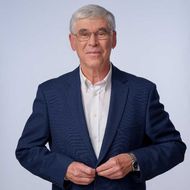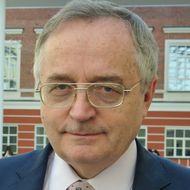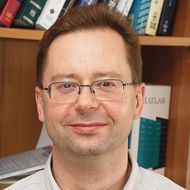.jpg) Studying at a foreign university gives you the unique opportunity to learn about a different culture, get a feel for its life and history, understand and speak its language. Russia is one of the most dynamically developing economies and forms the BRIC countries along with China, Brazil and India. She is re-emerging from the financial turbulence and continues to play a hugely important role on the world stage. An intimate knowledge of Russia could very well be a competitive advantage in the new global world to come.
Studying at a foreign university gives you the unique opportunity to learn about a different culture, get a feel for its life and history, understand and speak its language. Russia is one of the most dynamically developing economies and forms the BRIC countries along with China, Brazil and India. She is re-emerging from the financial turbulence and continues to play a hugely important role on the world stage. An intimate knowledge of Russia could very well be a competitive advantage in the new global world to come.
Studying at ICEF means you will be studying in the center of Moscow, giving you the perfect opportunity to experience the city to the utmost. Moscow is an exciting, vibrant city with an amazing variety of things to see and do. Whatever interests or preferences you have, here in Moscow you will find whatever best suits you.
.png)
The Kremlin towers can be seen from the windows of some of the lecture halls. The small streets around the University are full of old buildings built no later than the 19th century. Part of the campus, in fact, dates from an 18th century estate that survived the burning of Moscow in 1812. Red Square and the Bolshoi is no more than 25 minutes walking distance away, a short journey by metro will bring you to the Cathedral of Christ the Savior, the 4thlargest church in the world. Major attractions such as the Tretiakov Art Gallery, the Pushkin Museum of Fine Arts, the Historical Museum, the Arbat and much more are all within easy reach.
Principal places of interest
Useful link with detailed information: main attractions, museums, galleries>>
.jpg) The Red Square and Around Kremlin. One of the main symbols of Russia and Moscow. A popular attraction for Russian and foreign visitors. Located on the site of the city's old market place, Red Square served as Moscow's equivalent of ancient Rome's Forum - a meeting place for the people. It served as a place for celebrating church festivals, for public gatherings, hearing Government announcements and watching executions, the later becoming particularly commonplace during the reigns of Ivan the Terrible and Peter the Great and during the anarchic Time of Troubles in the early 17th century.
The Red Square and Around Kremlin. One of the main symbols of Russia and Moscow. A popular attraction for Russian and foreign visitors. Located on the site of the city's old market place, Red Square served as Moscow's equivalent of ancient Rome's Forum - a meeting place for the people. It served as a place for celebrating church festivals, for public gatherings, hearing Government announcements and watching executions, the later becoming particularly commonplace during the reigns of Ivan the Terrible and Peter the Great and during the anarchic Time of Troubles in the early 17th century.
.jpg) The Cathedral of Christ the Savior. A magnificent replica of the 19th century church constructed to commemorate Russia's victory over the French in the Napoleonic Wars, which was demolished on Stalin's orders in the 1930s and built anew in the 1990s to mark Moscow's 850th birthday.
The Cathedral of Christ the Savior. A magnificent replica of the 19th century church constructed to commemorate Russia's victory over the French in the Napoleonic Wars, which was demolished on Stalin's orders in the 1930s and built anew in the 1990s to mark Moscow's 850th birthday.
The Novodevichiy Convent and Monastery. A beautiful 16th century convent founded by Vasily III in 1524 to commemorate the recapture of Smolensk from the Lithuanians ten years earlier and the final resting place of some of Russia's most famous artists, writers, politicians and public figures.
.jpg) The State Pushkin Museum. A less extensive equivalent to St. Petersburg's Hermitage Museum, the Pushkin Museum of Fine Arts boasts an impressive collection or artifacts and artwork ranging from Roman antiquities to original canvasses by Gauguin.
The State Pushkin Museum. A less extensive equivalent to St. Petersburg's Hermitage Museum, the Pushkin Museum of Fine Arts boasts an impressive collection or artifacts and artwork ranging from Roman antiquities to original canvasses by Gauguin.
The State Tretyakov Gallery. Home to the world's most extensive collection of Russian art, including everything from icons by the legendary Andrey Rublyov to portraits of some of Russia's most prominent 18th and 19th century public figures.
The Bolshoi Theatre. .jpg) The world-famous ballet theater with a tumultuous history dating back to the late 18th century and producer of some of Russia's most famous ballets stars, including Rudolf Nuryev and Maya Plisetskaya.
The world-famous ballet theater with a tumultuous history dating back to the late 18th century and producer of some of Russia's most famous ballets stars, including Rudolf Nuryev and Maya Plisetskaya.
The Moscow Conservatory. One of the leading music universities in Russia. It organizes several hundred concerts per year in its own halls, as well as in other Russian cities, providing its students with many opportunities to actively participate in musical and cultural events.
Park Pobedy (Victory Park). .jpg) This park is tribute to many defining events in Russian history. There are many fountains, a memorial church and a tall angel-crowned obelisk by controversial city-sponsored artist Tsereteli. In the western section of the park you will find the Central Museum of the Great Patriotic War.
This park is tribute to many defining events in Russian history. There are many fountains, a memorial church and a tall angel-crowned obelisk by controversial city-sponsored artist Tsereteli. In the western section of the park you will find the Central Museum of the Great Patriotic War.
Vorobiovy Gory (Sparrow Hills). This a hill on the right bank of the Moskva River and one of highest points in Moscow with an altitude of about 220 meters, located on the territory of the Moscow State University. The observation platform gives a spectacular panoramic view of the city. The main building of the Moscow State University is spectacular in its own right, being one of the seven iconic Stalin-era wedding-cake skyscrapers scattered around Moscow.
Gorky Park. The famous, gorgeous park on the banks of the Moscow River immortalized in songs and poems, complete with gardens, attractions and roller coasters.
.jpg) VVTs - Exhibition Center. A unique architectural complex, including 70 various pavilions where a great variety of exhibitions are held. Also a popular place for rest and recreation.
VVTs - Exhibition Center. A unique architectural complex, including 70 various pavilions where a great variety of exhibitions are held. Also a popular place for rest and recreation.
Arbat. Once a bohemian quarter of the city, littered with cafes crammed full of the capital's intellectual elite, the Arbat is today Moscow's liveliest pedestrian street and offers a great choice of street cafes, restaurants, bars, clubs, souvenir stalls with outrageous prices, art markets and street entertainers.
.jpg) Tsaritsyno. A State Museum-Reserve with the largest palatial ensemble in Russia, the residence of Catherine the Great constructed between 1775 and 1796. It is one of the most beautiful and quietest places to spend time outdoors for Moscowers, and boasts what is perhaps the largest fountain in Moscow, which also “dances” in time to music.
Tsaritsyno. A State Museum-Reserve with the largest palatial ensemble in Russia, the residence of Catherine the Great constructed between 1775 and 1796. It is one of the most beautiful and quietest places to spend time outdoors for Moscowers, and boasts what is perhaps the largest fountain in Moscow, which also “dances” in time to music.
.jpg) Tverskaya Ulitsa. This is Moscow’s main street. It starts at the Red Square and goes past the Moscow Mayor’s offices, the famous statue of Yuri Dolgoruki, the founder of Moscow, past Pushkin Squarewith its iconic statue of the world-famous Russian poet, and continues to Mayakovskaya Square, with yet another wonderful statue and the Tchaikovsky concert hall.
Tverskaya Ulitsa. This is Moscow’s main street. It starts at the Red Square and goes past the Moscow Mayor’s offices, the famous statue of Yuri Dolgoruki, the founder of Moscow, past Pushkin Squarewith its iconic statue of the world-famous Russian poet, and continues to Mayakovskaya Square, with yet another wonderful statue and the Tchaikovsky concert hall.
.jpg) Kolomenskoe. This is yet another former royal estate. Now it is a historic museum-resort and a great place to escape from the bustle of the big city.
Kolomenskoe. This is yet another former royal estate. Now it is a historic museum-resort and a great place to escape from the bustle of the big city.
Moscow River Tour. A great way to see main sights of Moscow is by river boat. Tickets can be purchased at any pier.
Main are: near Novospasskiy most (m.Krestyanskaya Zastava), near Kievskiy vokzal (m.Kievskaya), or in Gorky Park. Price are about 400 rubles.
The Moscow Metro. Founded in 1935, the metro now is the most popular, heavily used transport in Moscow. 12 lines with 182 stations, about 6 million people each day - there are just a few facts about the metro. Metro lines are usually distinguished by assigned colors. You could change a line at the stations where lines intersect. There is a special line called 'Koltsevaya' (circular) which has a form of circle and intersects almost all existing lines.
The Moscow Metro is not only a transport but a true architectural masterpiece. If you'd like to, you could find a special sightseeing tour through the metro. However, if historic and architectural details are of no importance to you, just buy a usual ticket and explore the metro by yourself. The following stations should be on everyone’s short list of 'must see' stations: .jpg)
Komsomol'skaya
Novoslobodskaya
Mayakovskaya
Ploschad' Revolutsii
Elektrozavodskaya
Kievskaya
Vorob'ovy Gory
Belorusskaya
There are several special trains running in the Moscow metro, such as the "Akvarel" train with a real picture-gallery inside: you could admire at the works of Russian painter S.Andriyaka and his students. The train "Chitayuschaya Moskva" (Reading Moscow) cheers passengers with quotations and pictures from famous children's tales and stories. The metro is full of surprises and mysteries!



.jpg)
.png)
.jpg)
.jpg) The Cathedral of Christ the Savior
The Cathedral of Christ the Savior.jpg)
.jpg)
.jpg)
.jpg)
.jpg)
.jpg)
.jpg)
.jpg)